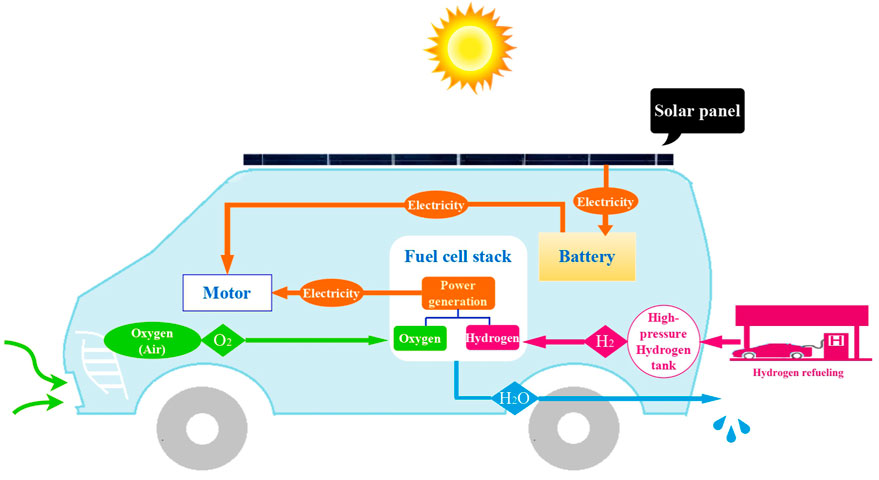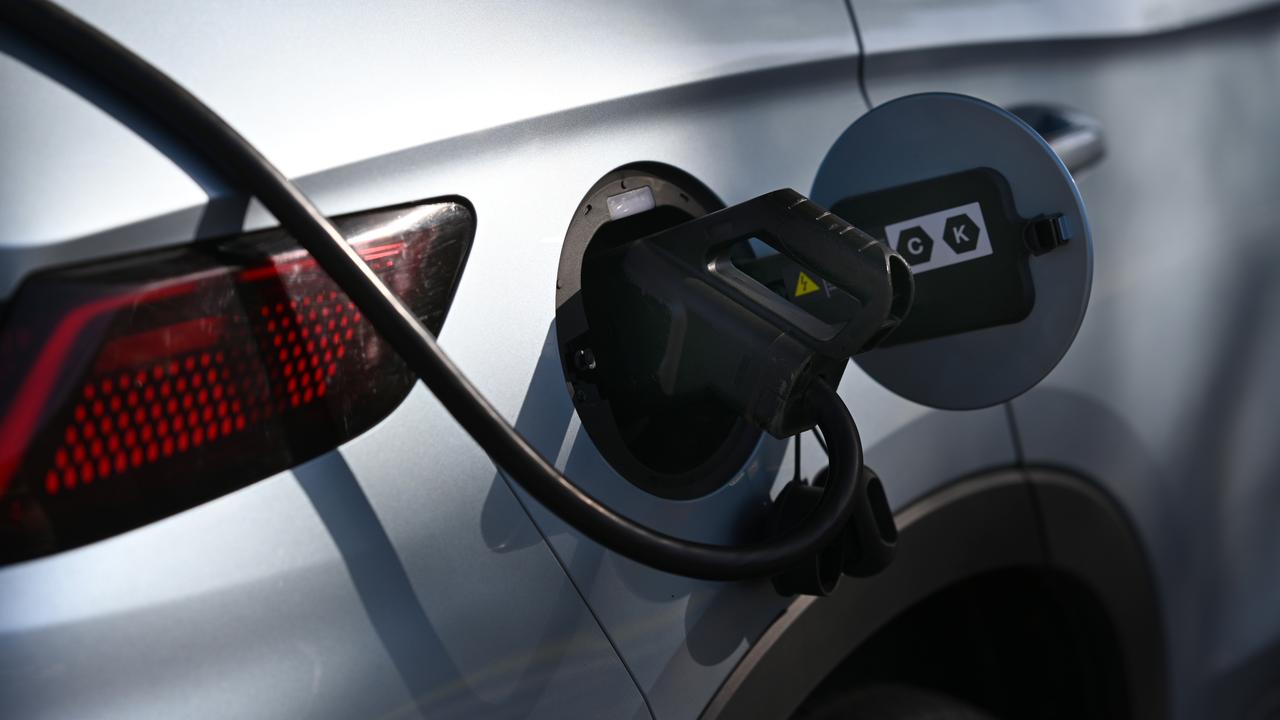Executive Summary
This report details the design, simulation, and experimental validation of a grid-tied hybrid renewable energy system engineered for smart electric vehicle (EV) charging infrastructure. The system integrates photovoltaic (PV) panels, a proton-exchange membrane fuel cell, battery storage, and a supercapacitor to deliver reliable and efficient power, directly supporting key Sustainable Development Goals (SDGs). An Adaptive Neuro-Fuzzy Inference System (ANFIS)-based Maximum Power Point Tracking (MPPT) algorithm optimizes PV power extraction, achieving 98.7% efficiency. The hardware prototype, built on a DSPIC30F4011 microcontroller, demonstrates robust performance, including voltage regulation within ±1.5% and output power deviation under 2%. The system ensures high power quality, with Total Harmonic Distortion (THD) levels compliant with IEEE 519 standards. This architecture presents a viable solution for developing sustainable energy and transportation infrastructure, contributing to SDG 7 (Affordable and Clean Energy), SDG 9 (Industry, Innovation, and Infrastructure), and SDG 11 (Sustainable Cities and Communities).
Introduction: Aligning EV Charging with Sustainable Development Goals
The global transition towards sustainable energy and transportation systems is critical for addressing climate change and ensuring energy security. Electric vehicles (EVs) are central to this transition, but their growing adoption places significant strain on conventional power grids. This report presents a hybrid renewable energy system designed to power EV charging stations, mitigating grid impact and promoting clean energy usage. The system’s design and objectives are intrinsically linked to several United Nations Sustainable Development Goals (SDGs).
SDG 7: Affordable and Clean Energy
The core objective of this work is to provide a clean, reliable, and efficient energy source for EV charging. By integrating renewable sources like solar PV and fuel cells with advanced energy storage, the system reduces dependence on fossil fuels, decreases carbon emissions, and promotes the use of affordable and clean energy. This is particularly relevant for expanding energy access in rural or remote communities where traditional grid expansion is not feasible.
SDG 11: Sustainable Cities and Communities
The development of smart EV charging infrastructure is a cornerstone of building sustainable cities. This system supports the creation of resilient and intelligent urban energy networks. By providing a stable and clean power source for transportation, it helps reduce urban air pollution and supports the shift to sustainable mobility, making communities safer and more resilient.
SDG 13: Climate Action
This initiative directly contributes to climate action by facilitating the widespread adoption of EVs, which are crucial for decarbonizing the transport sector. The use of renewable energy sources like solar and hydrogen fuel cells for charging further minimizes the carbon footprint, aligning with global efforts to combat climate change.
System Architecture and Contribution to SDG 9: Industry, Innovation, and Infrastructure
The proposed system represents an innovation in resilient and sustainable infrastructure, a key target of SDG 9. It moves beyond conventional charging systems by creating a self-sufficient microgrid that intelligently manages multiple energy sources. The architecture is designed for high efficiency, stability, and grid compliance.
Core Components for Sustainable Power Generation
- Photovoltaic (PV) System: Converts solar energy into DC electricity, serving as the primary clean energy source.
- Proton-Exchange Membrane Fuel Cell (PEMFC): Provides a stable and dispatchable clean energy backup, ensuring continuous power supply when solar energy is unavailable.
- Energy Storage System (ESS): A hybrid system combining a lithium-ion battery for long-duration energy storage and a supercapacitor to handle transient power demands, enhancing system stability and battery lifespan.
Advanced Power Conversion and Control
- Z-Source Integrated Boost Converter: An innovative converter topology that provides high voltage gain with reduced component stress and improved efficiency compared to traditional boost converters.
- Three-Phase Voltage Source Inverter (VSI): Converts DC power from the microgrid into AC power for grid connection, with an LC filter to ensure low harmonic distortion and high power quality.
- Bidirectional Battery Converter: Manages the charging and discharging of the battery, enabling flexible power flow to and from the grid or load, thus supporting grid stability.
Innovative Control Strategy: ANFIS-Based MPPT
A key innovation is the use of an Adaptive Neuro-Fuzzy Inference System (ANFIS) for Maximum Power Point Tracking (MPPT). This intelligent control strategy combines the learning capability of neural networks with the linguistic reasoning of fuzzy logic. It dynamically adapts to changing environmental conditions (e.g., solar irradiance, temperature, partial shading) to maximize power extraction from the PV array with superior speed and accuracy compared to conventional methods.
Novelty and Key Contributions
- Integrated Hybrid Design: A comprehensive system that synergistically combines PV, fuel cell, battery, and supercapacitor sources for reliable EV charging.
- Advanced ANFIS Control: Implementation of an ANFIS-based MPPT controller that achieves 98.7% efficiency, outperforming traditional algorithms.
- Innovative Converter Topology: Use of a modified Z-source boost converter for high voltage gain and stability.
- Hardware Validation: Successful implementation and validation of the system on a DSPIC30F4011 microcontroller, bridging the gap between simulation and real-world application.
- Grid Compliance: Demonstrated compliance with IEEE 519 standards for harmonic distortion, ensuring high power quality and safe grid integration.
Performance Validation and Results
The system’s performance was rigorously evaluated through both simulation in MATLAB/Simulink and experimental testing of a hardware prototype. The results confirm the system’s effectiveness in achieving its design objectives and its alignment with sustainability goals.
Simulation Analysis
Simulations demonstrated the system’s ability to manage power flow and maintain stability under dynamic conditions.
- PV System: The ANFIS controller effectively tracked the maximum power point, stabilizing the PV-side current at approximately 500 A.
- Power Conversion: The Z-source converter successfully boosted the voltage from 110 V to a regulated output of approximately 1100 V at 30 A.
- Fuel Cell and Battery: The fuel cell maintained a steady output of 110 V, while the battery state-of-charge (SOC) was preserved at 60% with a 120 V output, showcasing effective energy management.
- Grid Interface: Grid voltage and current were maintained at 500 V and 13 A, respectively, with clean sinusoidal waveforms.
Hardware Prototype Validation
The hardware prototype confirmed the simulation findings and demonstrated real-world viability.
- MPPT Efficiency: An efficiency of 98.7% was achieved, validating the superiority of the ANFIS-based controller.
- Voltage Regulation: The output voltage was regulated within a tight margin of ±1.5%.
- Power Stability: Steady-state output power deviation was measured at less than 2%.
- Power Quality: The Total Harmonic Distortion (THD) for both voltage and current was measured to be under 3%, well within the limits of the IEEE 519 standard. This is critical for maintaining grid health and achieving SDG 9.
Comparative Performance Analysis
When compared to conventional systems using standard PI or fuzzy logic controllers and traditional boost converters, the proposed architecture demonstrated superior performance across key metrics:
- Higher MPPT Efficiency: 98.7% vs. ~95-97% for other methods.
- Lower Harmonic Distortion: THD < 3% compared to > 5% in many conventional topologies.
- Faster Dynamic Response: A transient response time of 0.34 s, ensuring rapid stabilization.
- Enhanced Reliability: The hybrid energy storage and Z-source converter improve overall system resilience.
Conclusion: A Step Towards Sustainable Energy Infrastructure
This report has presented the successful design, simulation, and experimental validation of a grid-tied hybrid renewable energy system for smart EV charging. The system’s high efficiency, robust stability, and excellent power quality, achieved through the innovative use of an ANFIS-based MPPT controller and a Z-source converter, demonstrate its readiness for next-generation charging infrastructure. By providing a clean, reliable, and intelligent energy solution, this work makes a tangible contribution to achieving Sustainable Development Goals 7, 9, 11, and 13. Future work will focus on scaling the system for higher power applications and integrating predictive control algorithms for enhanced real-time energy management, further advancing the development of sustainable and resilient infrastructure.
SDGs Addressed in the Article
SDG 7: Affordable and Clean Energy
- The article focuses on developing a hybrid energy system that integrates renewable energy sources (RES) like photovoltaic (PV) panels and fuel cells. This directly supports the goal of increasing the use of clean energy. The text mentions the need to “shift toward renewable energy sources (RES) such as solar PV and fuel cells (FCs) due to their abundance, cost-effectiveness, and environmental benefits.”
- It emphasizes improving energy efficiency through advanced control methods. The system achieves “high energy efficiency” and an “MPPT efficiency of 98.7%,” which is central to SDG 7.
- The research aims to provide reliable electricity for applications like EV charging and addresses the lack of electricity in rural areas by proposing DC microgrids as a “cost-effective and efficient solution.”
SDG 9: Industry, Innovation and Infrastructure
- The core of the article is the “comprehensive design, simulation, and experimental validation” of a new technological system. This represents an advancement in innovation and technology.
- The project is specifically tailored for “electric vehicle (EV) charging applications” and aims to create “next-generation smart EV charging stations.” This contributes to building sustainable and resilient infrastructure.
- The system’s design focuses on upgrading technology by using an “Adaptive Neuro-Fuzzy Inference System (ANFIS)-based maximum power point tracking (MPPT) algorithm” and a “Z-source integrated boost converter” to improve performance over conventional systems. This aligns with upgrading industrial and technological capabilities.
SDG 11: Sustainable Cities and Communities
- The article states that EV charging stations contribute to “reducing pollution and fossil fuel dependence.” By providing a clean energy source for electric vehicles, the technology helps reduce the adverse environmental impact of transportation in cities and communities.
- The development of “smart EV charging infrastructure” is a key component in creating sustainable transport systems, which is essential for the future of sustainable cities.
SDG 13: Climate Action
- The entire premise of the article—developing an efficient system for EV charging powered by renewable energy—is a direct measure to combat climate change. It promotes a move away from fossil-fuel-powered transportation, which is a major source of greenhouse gas emissions.
- The technology described integrates “climate change measures into… planning” by creating infrastructure that is inherently low-carbon and sustainable.
Specific SDG Targets Identified
Targets for SDG 7
- Target 7.2: By 2030, increase substantially the share of renewable energy in the global energy mix.
- Explanation: The article directly addresses this by designing a system that “integrates photovoltaic (PV) panels, a proton-exchange membrane fuel cell, battery storage, and a supercapacitor.” This hybrid system is designed to increase the utilization of renewable sources for a high-demand application like EV charging.
- Target 7.3: By 2030, double the global rate of improvement in energy efficiency.
- Explanation: The study’s objective is to “enhance energy conversion efficiency.” It achieves this through an ANFIS-based MPPT controller that results in a high “MPPT efficiency of 98.7%” and an overall system efficiency of 98.7%, showcasing a significant improvement in energy efficiency.
- Target 7.a: By 2030, enhance international cooperation to facilitate access to clean energy research and technology… and promote investment in energy infrastructure and clean energy technology.
- Explanation: This academic paper itself is a form of promoting access to clean energy research. It details the “design and analysis of proposed EV micro-grid system,” including advanced technologies like ANFIS controllers and Z-source converters, contributing to the global knowledge base on clean energy technology.
Targets for SDG 9
- Target 9.1: Develop quality, reliable, sustainable and resilient infrastructure… to support economic development and human well-being.
- Explanation: The research aims to develop a “promising solution for next-generation smart EV charging stations.” The system is designed for reliability and resilience, with features like “DC link stability,” “voltage regulation within ± 1.5%,” and the ability to ensure a “reliable and efficient power delivery.”
- Target 9.4: By 2030, upgrade infrastructure and retrofit industries to make them sustainable, with increased resource-use efficiency and greater adoption of clean and environmentally sound technologies.
- Explanation: The proposed system is an example of upgrading infrastructure with clean technology. It uses renewable sources (PV, fuel cell) and focuses on high efficiency. Furthermore, it ensures compliance with environmental standards, achieving “low total harmonic distortion (THD), in compliance with IEEE 519 standards.”
- Target 9.5: Enhance scientific research, upgrade the technological capabilities of industrial sectors… encouraging innovation.
- Explanation: The paper is a work of scientific research that introduces novel contributions, such as the “use of an Adaptive Neuro-Fuzzy Inference System (ANFIS)” for MPPT and a “modified Z-source boost stage.” The experimental validation on a “DSPIC30F4011 controller” demonstrates the upgrading of technological capabilities from simulation to a real-world prototype.
Targets for SDG 11
- Target 11.6: By 2030, reduce the adverse per capita environmental impact of cities, including by paying special attention to air quality.
- Explanation: The article explicitly states that “EV charging stations provide electricity for charging electric vehicles (EVs), reducing pollution and fossil fuel dependence.” By creating a renewable-powered infrastructure for EVs, the technology directly contributes to improving air quality and reducing the environmental footprint of urban transportation.
Targets for SDG 13
- Target 13.2: Integrate climate change measures into national policies, strategies and planning.
- Explanation: The development and implementation of technologies like the one described in the article are fundamental actions for integrating climate change measures. A grid-tied renewable energy system for EV charging is a practical strategy to decarbonize the transport sector, a key goal in climate action plans.
Indicators for Measuring Progress
Indicators for SDG 7 Targets
- Renewable Energy Capacity (Indicator for Target 7.2): The article specifies the capacity of the renewable components, such as the “PV system has a peak power of 186 kW.” This is a direct measure of the installed renewable energy capacity.
- Energy Efficiency Metrics (Indicator for Target 7.3): The article provides several quantifiable indicators of efficiency:
- “MPPT efficiency of 98.7%”
- “Overall system efficiency of approximately 98.7%”
- “Power conversion efficiency” is a key metric compared between simulation (99.5%) and hardware (98.7%).
- Technological Advancement (Indicator for Target 7.a): The development and successful validation of the “ANFIS-based MPPT algorithm” and the “Z-source integrated boost converter” serve as indicators of progress in clean energy technology research.
Indicators for SDG 9 Targets
- Infrastructure Reliability and Quality (Indicator for Target 9.1): The system’s performance metrics act as indicators of quality and reliability:
- “Voltage regulation within ± 1.5%”
- “Output power deviation under 2%”
- “Transient response time was observed at approximately 0.34 s”
- Adoption of Clean Technology (Indicator for Target 9.4): The power quality of the system is a key indicator. The article measures the “Total Harmonic Distortion (THD)” of the output current and voltage, with hardware results of “2.1% (Voltage THD)” and “2.8% (Current THD),” which are “in compliance with IEEE 519 standards.”
Indicators for SDG 11 and 13 Targets
- Deployment of Low-Carbon Infrastructure (Indicator for Targets 11.6 and 13.2): The successful “hardware prototype” and “experimental validation” of the grid-tied hybrid renewable energy system for EV charging is a tangible indicator. It demonstrates the feasibility of deploying infrastructure that directly contributes to “reducing pollution” (Target 11.6) and serves as a “climate change measure” (Target 13.2).
Summary Table of SDGs, Targets, and Indicators
| SDGs | Targets | Indicators Identified in the Article |
|---|---|---|
| SDG 7: Affordable and Clean Energy | 7.2: Increase share of renewable energy. 7.3: Improve energy efficiency. 7.a: Promote access to clean energy research and technology. |
|
| SDG 9: Industry, Innovation and Infrastructure | 9.1: Develop quality, reliable, sustainable infrastructure. 9.4: Upgrade infrastructure with clean technologies. 9.5: Enhance scientific research and innovation. |
|
| SDG 11: Sustainable Cities and Communities | 11.6: Reduce the adverse environmental impact of cities. |
|
| SDG 13: Climate Action | 13.2: Integrate climate change measures into policies and planning. |
|
Source: nature.com







